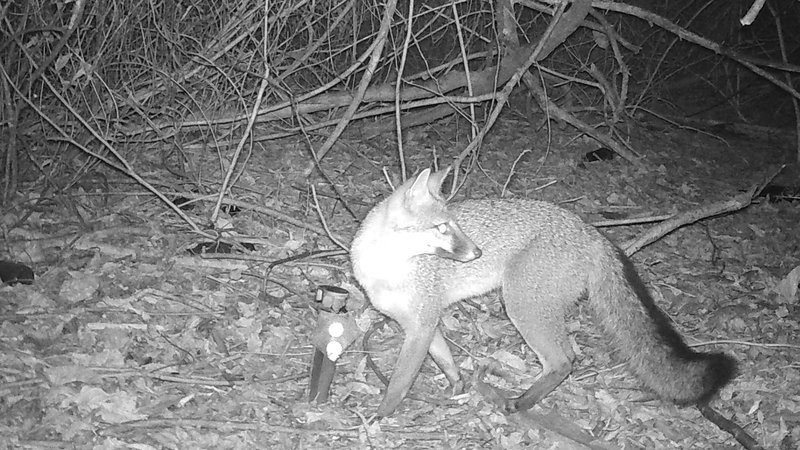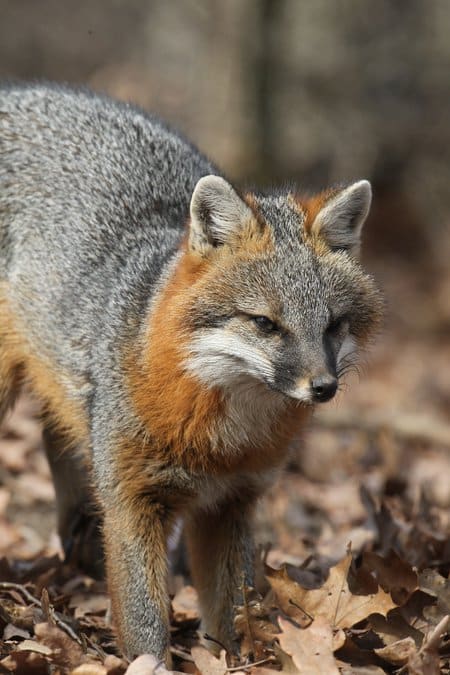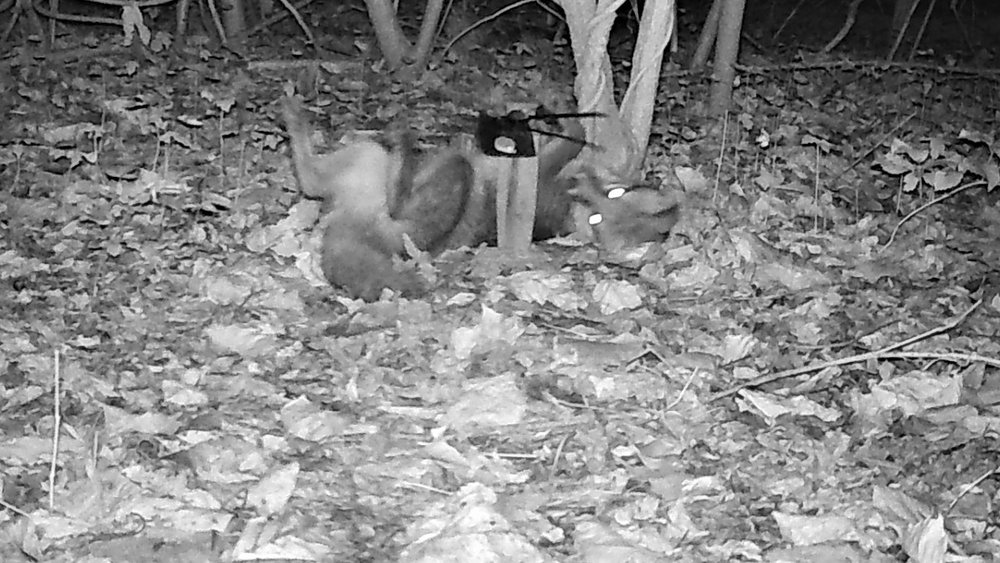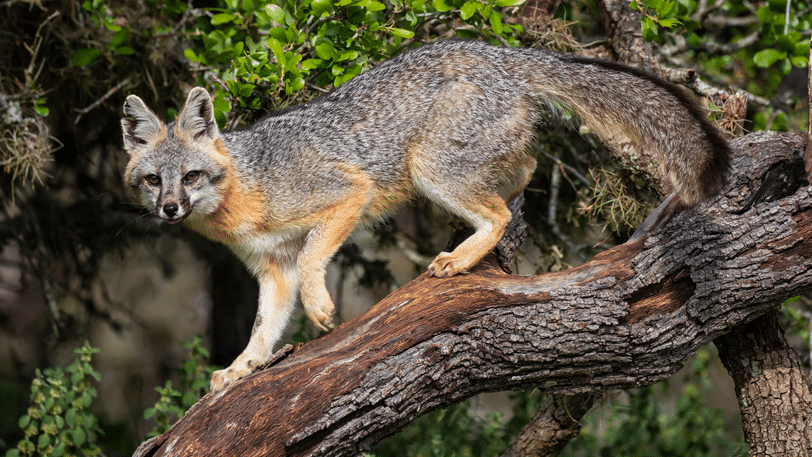Natural State fox at home in gray areas of habitat
ON 04-12-2023

April 12, 2023
Randy Zellers
Assistant Chief of Communications
Mention seeing a fox in the woods of Arkansas and most people will immediately think of a red animal with a white-tipped tail they’ve seen in depictions of European fox hunts or from animated films. The red fox is definitely at home in The Natural State, but another native fox species calls Arkansas home, and it may be even craftier than its ginger canid cousin.
Gray foxes, standing slightly smaller than red foxes, sport a grayish coat with a rusty red hue along the sides of their necks and the underside of their tails. Their belly is cream-colored, as are their cheeks and throat. Their bushy gray/red tail ends in a black tip. Adult gray foxes typically reach about 42 inches long and weigh around 11 pounds.

Unlike red foxes that try to outrun pursuers or hide in snags and thickets on the ground, gray foxes are adept climbers. In fact, gray foxes are the only North American members of the canine family that readily climb trees. This enables them to have temporary dens in tree hollows above ground level, avoid larger predators like coyotes, and pursue rats and mice that scamper up tree trunks.
Although foxes are omnivores that will eat berries and other available vegetation, rabbits and rodents make up a large portion of a gray fox’s diet.
Kirsten Bartlow, AGFC Watchable Wildlife Program coordinator, said this rodent-heavy diet should be welcome news to people who live in rural areas and even cities as gray foxes help control mouse and rat populations in some of the most unlikely areas.
“We’ve seen a lot of gray foxes in trail camera photos from a research project stretching right through the heart of downtown Little Rock,” Bartlow said. “Quite a few have mice, rats or other small rodents in their mouths. They’ve adapted quite well to urban development.”
Kim Sparks, research project analyst in the AGFC’s Research Division, says gray foxes have been found throughout the Central Arkansas Urban Wildlife Project, a collaboration between the AGFC, Hendrix College and the Urban Wildlife Information Network.
“We placed 30 cameras in a variety of locations along an urban-to-rural gradient within 2 kilometers of the Arkansas River in central Arkansas,” Sparks said. “We collect photos and upload them to a large database organized by the network.”
While it began as a project in around 20 U.S. cities, UWIN has expanded to include 49 official partners on an international level.
“More locations than that are contributing, but haven’t signed in as official partners yet,” Sparks said. “We have images coming from Germany, France, and even Madagascar signed up a few weeks ago to contribute to the project.”
Data from the project can be used to guide future access projects to build wildlife-viewing areas within urban and suburban areas locally, but it has much more potential for researchers.
“Arkansas’s contribution to the project is being included in a manuscript looking at a multicity study on the impacts of gentrification on wildlife communities,” Sparks said. “It’s interesting to see just how many ways this information can be shared to benefit wildlife and help connect us with it. Many people would be surprised by the amount of foxes and bobcats we see in some of the semirural spots pretty close to urban areas.”

In the case of gray foxes, Sparks said this species has a real affinity for a particular lure disk placed at a few of the camera locations.
“[The lure] smells horrible, but they love it,” Sparks said. “We get lots of images of them inspecting it and even rolling around on it.”
Most images found of gray foxes in the project are taken in the trail camera’s infrared setting, as the species is primarily nocturnal. Breeding season for foxes typically runs from January through March, with most litters of kits being born May through June. Unlike many mammals, male gray foxes tend to help with parenting duties, bringing food to the denned-up female and assisting in teaching their young (called pups or kits) to hunt.
Click here to learn more about the Central Arkansas Urban Wildlife Project.

####
CUTLINES:
Fox at night
Gray foxes are primarily nocturnal.
Vertical of gray fox
Slightly smaller than red foxes, gray foxes are one of The Natural State’s most secretive furbearers
Gray fox on back
Foxes have an affinity for a scent lure used in the Central Arkansas Urban Wildlife Project.
Fox in tree
Foxes are the only North American canid that readily climbs trees to avoid danger or seek prey.
Recent News

AGFC Commissioner Meeting Notice
Apr. 16, 2024
Subscribe to Our Weekly Newsletter E-mails
Don’t miss another issue. Sign up now to receive the AGFC Wildlife Weekly Newsletter in your mailbox every Wednesday afternoon (Waterfowl Reports are published weekly during waterfowl season and periodically outside the season). Fishing Reports arrive on Thursdays. Fill in the following fields and hit submit. Thanks, and welcome!

